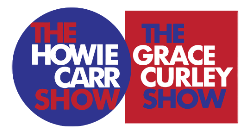Taylor’s Takes: Karen Read’s exoneration is incomplete
Had Karen Read only been charged with OUI, the case would have been thrown out the first go-around due to a lack of evidence.
After over three years of persecution and prosecution, Karen Read has walked away from her trial nearly blemish-free.
I had hoped this day would come, that Karen would be ultimately vindicated in the death of her boyfriend, John O’Keefe.
But now that that day has come, I find myself more annoyed than anything else.
Karen and her defense team’s victory was not an entire repudiation of the Norfolk District Attorney’s case against her. Not all ground was taken back.
While the jury acquitted Karen of murder, manslaughter, and leaving the scene of an accident, they found her guilty of operating under the influence.
Why? How? Under the parameters given to a jury, how were they able to come to that conclusion beyond a reasonable doubt?
Before I go any further, I’d like to flatly state that there is not an ounce of my being that doesn’t believe Karen Read was driving drunk the night John O’Keefe was killed. The surveillance video from the bars she visited that night, the erratic data from her Lexus, her blood alcohol taken the next morning, and her own admissions all point to the same conclusion: Karen Read was heavily intoxicated while in command of that vehicle.
However, there is no definitive proof that she was, in fact, drunk when she drove from the Waterfall Bar and Grille to Brian Albert’s house and then to O’Keefe’s home.
Let’s take this step by step.
The surveillance videos from C.F. McCarthy’s and the Waterfall are practically useless when it comes to the OUI charge. Sure, they prove Karen was at those establishments and that she consumed a number of beverages. But they give absolutely no indication as to Karen’s level of intoxication.
Nowhere in those surveillance videos is Karen seen stumbling around, struggling to find her footing. The videos don’t contain any audio of Karen slurring her words or talking gibberish. There are no visible signs of inebriation. There is only evidence of her presence and that she was consuming liquid of some kind, presumably mixed alcoholic beverages.
While I’m not an expert on deciphering technical data from automobiles, Karen’s seemingly erratic operations of her Lexus while departing from 34 Fairview Road are easily explainable. The roads were slick from the nor’easter that was bearing down on New England. It’s quite easy to overcompensate and begin to travel at speeds greater than intended, even in reverse, when dealing with inclement weather such as a blizzard.
On January 29th, 2022, Karen Read was sectioned at a local hospital after exhibiting signs that she may be a danger to herself. Read was distraught after O’Keefe’s traumatic death and the implication that she may be responsible. Her blood was drawn at 9 a.m. and tested, revealing a 0.083% blood alcohol content, slightly above Massachusetts’ 0.08% legal limit.
Experts estimate Karen’s BAC was somewhere between 0.13% and 0.29% at 12:45 a.m. that morning, an estimate based on when Karen supposedly consumed her last alcoholic beverage that night.
Seems like a sound conclusion, no?
What the jury may not have accounted for in considering this piece of evidence is reasonable doubt.
By 12:45 a.m. on January 29th, Karen was already at John O’Keefe’s house and would soon leave numerous, regrettable voicemails in O’Keefe’s cellular inbox.
How are we to know Karen wasn’t below the legal limit when she arrived at O’Keefe’s house and then consumed more alcohol when she got inside? A cursory Google search reveals that BAC levels between 0.15% and 0.30% can produce blackout symptoms. It’s entirely possible that after arriving at O’Keefe’s house, she consumed more alcohol and later forgot she had done so due to her increased state of inebriation.
Unlikely? Perhaps. But it is possible, and therefore a reasonable doubt.
Finally, we have Karen’s own admissions to the crew of the HBO documentary, A Body in the Snow.
I have multiple problems with Karen’s interviews given to the production team, mostly that she gave the interviews to begin with. At the time, who could have predicted that the first trial would result in a hung jury and her on-screen candor would be entered as evidence in her retrial? But that was apparently a risk Karen and her defense was willing to take.
Throughout the documentary series, Karen’s interviews almost seemed to center on alcohol consumption. It was inescapable. She enjoyed drinking and keeping company with people who shared in that same enjoyment.
But these interviews were not sworn testimony, even though they were entered into evidence as such. Karen Read was not under oath while sitting in front of a camera, spilling her guts about what she remembered of that night. Every other piece of testimony in the trial came from individuals who had to swear an oath in front of the court that what they were about to testify to was the truth, the whole truth, and nothing but the truth. That standard was overlooked concerning Karen’s recorded interviews and entered into evidence, regardless.
I know what you’re saying. “So what, Taylor? She admitted to drinking and driving in those interviews. Case closed.”
Picture this. You have a few too many one night and decide, for whatever reason, you’re going to chance it and drive home. And let’s imagine that you make it home safely and without incident.
Let’s also picture that you wake up the next day with so much regret that you decide to turn yourself in. You drive to the nearest police station and admit to the on-desk officer that you drove home drunk the night before.
Do you know what that officer is going to tell you?
“Better hope I don’t catch you next time.”
There’s absolutely nothing they can do. They didn’t see you. There was no traffic stop with probable cause. No sobriety test was given, and no breathalyzer sample was taken. You will not be charged with operating under the influence based on your word alone.
So why was Karen Read charged when there is no legal evidence absolutely proving that she was drunk when driving home from the Fairview Road?
There was no evidential basis for the charge, and the prosecution did not prove their case on the charge.
Had Karen Read only been charged with operating under the influence, the case would have been thrown out the first go-around due to a lack of evidence.
Granted, Read was sentenced to one year of probation and completion of an alcohol education program, “the standard that everybody else gets for a first-time OUI,” as Judge Beverly Cannone so flatly put it. The sentence isn’t a harsh one.
But I do hope Read’s defense appeals the singular conviction. Karen Read deserves complete exoneration, even if it is on technical grounds as I have argued.
The law is black and white. It’s when we make assumptions and ignore a lack of both hard evidence and thorough investigation that we rob a defendant of due process.







